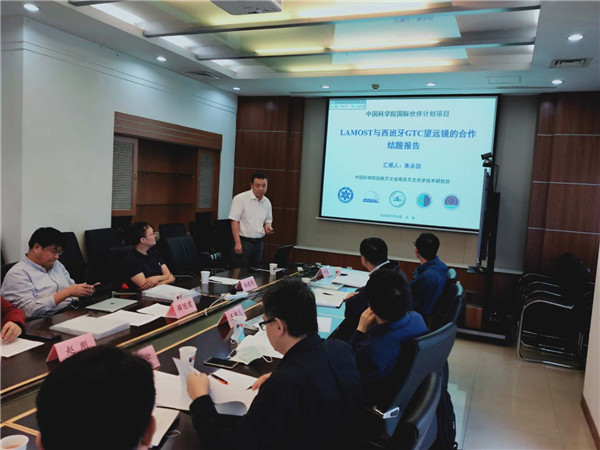On September 29, the Bureau of International Cooperation of the Chinese Academy of Sciences organized an expert group to complete the acceptance of the scientific and technological cooperation project for the Belt and Road undertaken by Nanjing Institute of Astronomical Optics & Technology (NIAOT) between LAMOST (Large Sky Area Multi-Object Fiber Spectroscopic Telescope) and Spanish GTC (Gran Telescopio Canarias). A scientific and technical team has been set up and scientific results has been obtained in black holes and lithium super abundant stars etc. At the same time, international review for the design scheme of the GTC high resolution ultra-stable spectrometer was passed and a number of key technologies was broken through which provide a solid foundation and strong guarantee for next stage of construction. The project helps to build GTC high-resolution ultra-stable spectrometer with spectral resolution of R≥100000 installed in Nasmyth platform of Spain's 10.4m telescope GTC which will be the most competitive device for measuring the radial velocity of stars in the northern hemisphere and make pioneering scientific achievements in the field of earth-like planets, planetary formation mechanism, special celestial bodies and other astronomical hot spots. 
Prof.Zhu Yongtian give an introduction on implementation of the project |